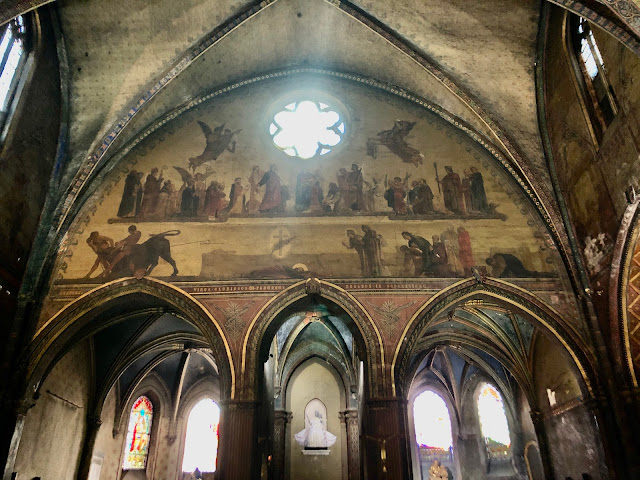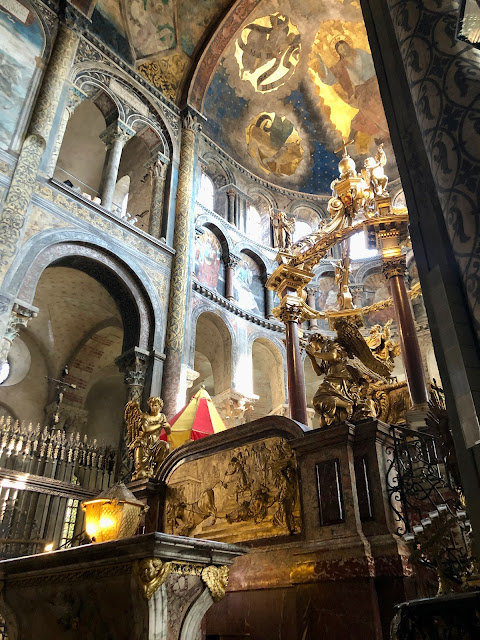My friend, Rebecca, invited us to come to Toulouse on Thursday for a tour of ancient Toulouse. We were up early and left by 7:30 for the almost two hour drive to Rebecca’s house. She was prepared with maps and books, and off we went by 10. Toulouse was founded by the Romans and today is the Capital of the Occitanie Region, 150 miles from the Mediterranean, 143 miles from the Atlantic. Sited on the Garonne River and with the Canal du Midi running through the city, it is the fourth largest city in France, the center of the European aerospace industry and the home of Airbus, and home of the University of Toulouse, founded in 1229.
We walked past the Capitole, where the first buildings of the current Capitole were erected in the 12th century, with construction beginning in 1190. The current facade, 135m long and built of the rouge brick of Toulouse dates from 1750. In 1873, Violet-le-Duc built the bell tower on top of the donjon of the building. The Capitole houses the city hall, the Theatre du Capitole de Toulouse, and the Orchestre National du Capitole. The Capitole forms one side of the Place du Capitole with beautiful buildings on the other three sides.
Just up the street from the Capitole, we visited Notre-Dame du Taur, built on the legendary site of where the first bishop of Toulouse was martyred in 250, and “became detached from the bull that had dragged him to his death.” Various churches were built on the site to accommodate visitors coming to honor the bishop. The present building was constructed between the 14th and 16th centuries. Above the alter is a painting depicting the martyrdom of the bishop with the bull. A 14th century painting of 38 figures is on the south wall of the church. It is an unusual mix of art in the Notre-Dame du Taur.
Just up the street, we came to Basilique Saint-Sernin, whose construction began in the late 1000’s and lasted a century, built over a Christian neocropolis dating to the 1st century. It is considered one of the best examples of Romanesque architecture in Europe. It was classified as an Historical Monument of France in 1840, and is also a UNESCO World Heritage site. Violet-lu-Duc was commissioned to do a complete restoration in 1845. Saint-Sernin is a stunning church, with it’s 65m bell tower, 115m nave, frescoes dating from 1180.We visited the Musée St-Raymond, adjacent to Basilique Saint-Sernin. The musée is the archaeological museum of Toulouse, opened in 1892. The site was originally a necropolis, and in later constructions it was a hospital for the poor and pilgrims, a prison, student residence or St. Raymond University, stables, and eventually became a museum. We walked through more of the old city on our way to lunch. We stopped at Chapelle des Carmelites, a former Catholic religious building, built in the 17th century. It contains a remarkable set of murals. It is the only building of the convent not destroyed during the French Revolution. It was classified as a historical monument in 1909. It’s interior is stunning!





















